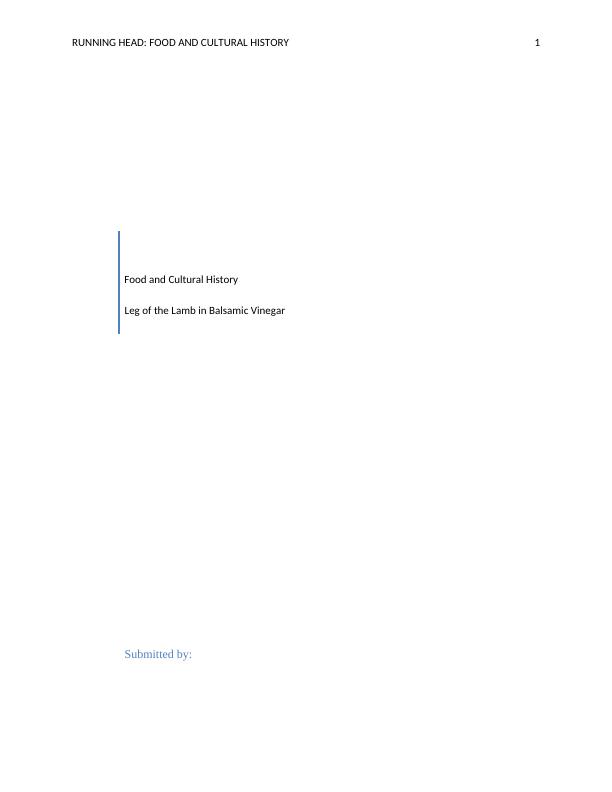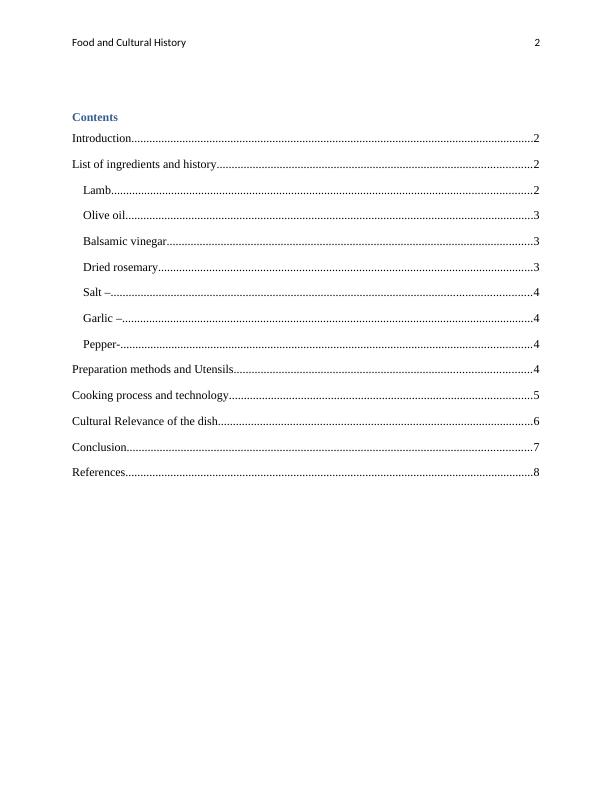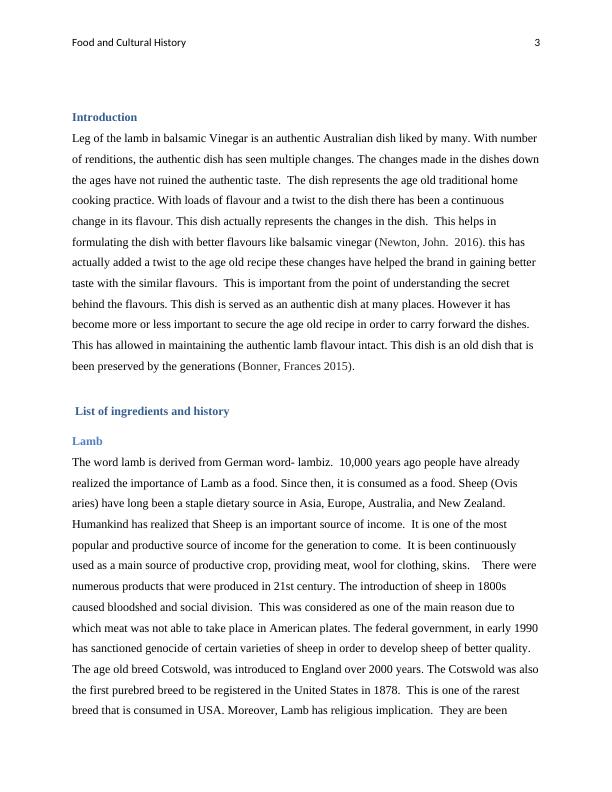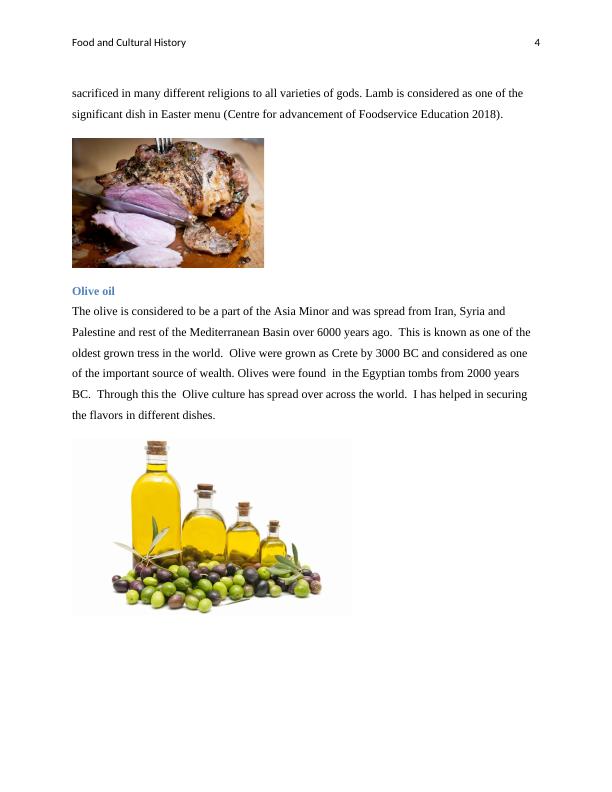Food and Cultural History: Leg of the Lamb in Balsamic Vinegar
This is a unit on the cultural history of food, offered by the School of Humanities and Communication Arts. It is delivered entirely online and there are no attendance requirements. Students are expected to be familiar with the Student Code of Conduct.
11 Pages2997 Words375 Views
Added on 2023-06-15
About This Document
Explore the history and cultural significance of Leg of the Lamb in Balsamic Vinegar, an authentic Australian dish. Discover the ingredients, preparation methods, and cooking process used to create this flavorful dish. From the religious implications of lamb to the ancient origins of olive oil, this dish is steeped in tradition and history. While the recipe has undergone changes over time, the authentic taste remains intact. This dish is served as an authentic dish at many places and has become more or less important to secure the age old recipe in order to carry forward the dishes. Subject: Food and Cultural History. Course Code: N/A. Course Name: N/A. College/University: N/A.
Food and Cultural History: Leg of the Lamb in Balsamic Vinegar
This is a unit on the cultural history of food, offered by the School of Humanities and Communication Arts. It is delivered entirely online and there are no attendance requirements. Students are expected to be familiar with the Student Code of Conduct.
Added on 2023-06-15
ShareRelated Documents
End of preview
Want to access all the pages? Upload your documents or become a member.
Henan Cuisine Originates Assesment Report
|7
|1712
|18




